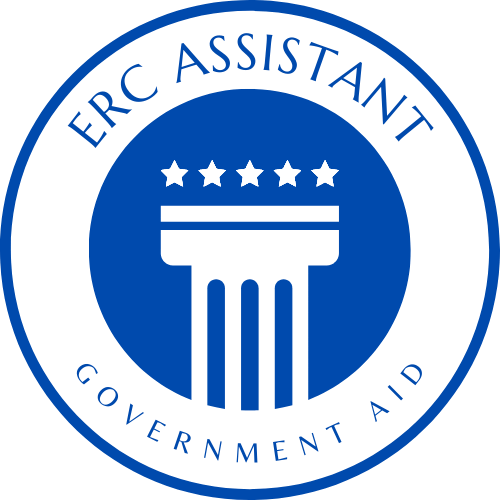The COVID-19 pandemic was a major thorn in the side of many businesses, and many are still trying to recover. To compensate, the government offers employee retention credit accessible through payroll tax amendments. Read on to find out if your business is eligible for the refund and how to file your employee retention credit yourself.
Use Bottomline Concepts for streamlined and speedy ERC filing!
What is the Employee Retention Tax Credit?
Employee retention credit (ERC) is a tax credit available to businesses choosing to retain their employees during the COVID-19 pandemic. It is a refundable grant made possible by the Coronavirus Aid, Relief, and Economic Security (CARES) Act established in 2020.
In effect, companies affected by shutdowns or significant declines in gross receipts in 2020 and 2021 may be eligible for financial help from the government. Only small to medium-sized businesses can benefit from the package.
As part of a greater pandemic relief fund, employers can receive up to $26,000 per employee retained. It’s possible to collect up to $5,000 for each employee in 2020 and $7,000 per employee for the first three quarters of 2021. The amount your company is eligible for depends on qualified wages and any healthcare paid to your team.
What Companies Qualify for the Employee Retention Tax Credit?
To qualify for an employee retention tax credit, your business or non-profit must meet the government’s criteria for 2020 and 2021. Companies need to have experienced at least one of the following to meet requirements:
- Your business was completely or partially closed from a government order in your state. This order must have come as a result of the COVID-19 pandemic.
- Your business faced a certain decline in gross receipts.
Rules for a “decline in gross receipts” changed from 2020 to 2021. For the 2020 tax calendar, your company must have seen a 50% decrease in gross receipts for each quarter compared to 2019’s numbers during the same time frame. Businesses could only have 100 or fewer full-time employees, not including the owners.
The government changed things up in 2021, stating businesses must have at least a 20% drop in gross receipts per quarter compared to 2019. For this period, companies could qualify if they had less than 500 full-time employees, excluding ownership.
What’s the Deadline for Applying for an ERC Refund?
Usually, you can amend errors or make adjustments to your payroll taxes for up to three years after filing. For interested businesses, there’s still time to send in applications for ERC. For 2020 claims, you have until April 15, 2024 to file for a refund. All 2021 amendments have until April 15, 2025.
How To File Your Employee Retention Credit In 6 Steps
The CARES act has come and gone, but it’s not too late to apply for your employee retention credit. Here are the steps you need to take to earn your reimbursement from the government.
Step 1: Pull Together Your Business Payroll Paperwork
You’ll need your payroll information from both the 2020 and 2021 tax calendars before going any further with the process. If you weren’t able to keep meticulous records during that time, you may have to consult an outside party to help gather up this information.
Knowing how many employees you kept on the payroll during the pandemic is paramount to determining whether or not you’re eligible for a payback from the government. With this documentation in hand, you can determine if your company qualifies.
Step 2: Determine if You’re Eligible
Not every small or medium-sized business is eligible for employee retention credit. Since the CARES act stretched out over two years, requirements shifted from one year to the next.
If your state government imposed shutdowns that affected your business at any point during the COVID-19 pandemic, you’ll qualify for the employee retention credit. This also includes interruptions to trade or logistics due to mandates.
Otherwise, you can still benefit from employee retention credit if you suffered losses in revenue. During the 2020 tax bracket, you must have seen a 50% decrease in gross receipts from the same quarter in 2019. For 2021, you had to earn less than 80% over the same period in 2019.
To qualify for 2020’s credit, your business had to have less than 100 full-time employees. The government increased this number to 500 for the three quarters of eligibility in 2021.
Any business meeting these criteria can claim employee retention credit for staff kept on hand during the COVID-19 pandemic.
Step 3: Calculate Your Credit
There’s no way to receive back everything you paid employees during 2020 and 2021. The government caps qualifying wages at $10,000 for each employee per interval the employee retention credit is in effect.
In 2020, the government offered 50% of qualifying wages back to business owners for each employee you kept on the books. This means the IRS will pay up to $5,000 per team member.
2021 saw a considerable increase in government payouts to businesses. For the first three quarters of the year, employers could collect 70% of qualifying wages paid to employees. Since this reimbursement affected three quarters, companies were eligible to receive up to $21,000 per employee.
Consider this example: Fred’s Tackle Shop kept its ten employees on the payroll throughout the shutdown. Each employee earns $30,000 per year working at the tackle shop.
Although employees make more than $10,000, the government limits eligible wages to this amount. For all of 2020, the government rewards Fred with $5,000 per employee (50% of qualifying wages) for the year. Fred’s credit for 2020 is $50,000.
During 2021, Fred will receive 70% of qualifying wages per employee for the first three quarters of the year. He can collect $7,000 for each of his staff for a total of $70,000 per quarter. Being eligible for three quarters, Fred will receive $210,000 for 2021.
Step 4: Fill Out Form 941-X
With the total credit in mind for your business, you can now file a return with the IRS. Because the ERC expired in 2021, you’ll need to complete a Form 941-X to compensate for funds you were eligible for from a previous quarter.
You’ll need to have each original Form 941 you filed, and you can only fill out a Form 941-X for one quarter at a time. If you’re collecting employee retention credit for 2020 and 2021, you’ll need to fill out four separate forms.
The initial section asks for your company information, including your business name, address, and employer identification number. Under Part 1, check that you’re filing a Claim for overreported tax amounts.
In Part 2, check the box on line 3 and the box under 5d stating you didn’t withhold any money from your employees.
For Part 3, your main focuses are the boxes under line 18a for nonrefundable portions of employee retention credit. Use Worksheet 1 from your Form 941 to determine your nonrefundable portion of the ERC. Record your total from line 18a on line 23.
You’ll use line 26a to record your refundable employee retention credit. This information also comes from Worksheet 1 of Form 941 you filed for the representative quarter. Line 27 captures the total sum of lines 23 and 26a.
Line 30 is where you record your qualified wages for the employee retention credit. Finally, under line 43, you’ll need to write out a detailed summary explaining you’re looking for amended ERC returns.
The process is a bit tedious, and you can only file a correction for one quarter at a time. It’s imperative to fill out the form completely and accurately, lest you risk running into delays in receiving your reimbursement from the IRS.
Should the process seem daunting to you, it may be in your best interest to make use of an ERC company versed in filing these forms. Bottomline Concepts is our top choice for fast and affordable processing.
Step 5: Submit the Form to the IRS
Now that your Form 941-X is complete, you’ll want to get it in front of the IRS as soon as possible. Luckily, you can send it in the same way you submit your normal payroll forms.
The IRS doesn’t allow you to submit Form 941-X electronically. Depending on your state, you’ll need to mail it to the Department of Treasury in either Ohio or Utah.
Step 6: Wait for your Reimbursement
At this stage of the game, the IRS has been receiving requests for employee retention credits for almost three years. The result is a backlog of forms leading to processing delays for your refund.
While there’s no way to say for sure how long you can expect to wait, plan for somewhere between six months and a year to receive your ERC funds from the government.
If your business finds itself in dire financial straits, ERC processing companies like Omega Accounting Solutions offer bridge loans to keep you afloat. You’ll receive funds within a few business days to cover expenses while you wait for that refund to appear.
Employee Retention Credit Vs. the Paycheck Protection Program
The CARES act introduced both employee retention credit and the paycheck protection program in 2020. How do they relate, and can a company make claims on each one?
What is the Paycheck Protection Program?
When the COVID-19 pandemic first hit, some companies turned to the payroll protection program (PPP) offered by the Small Business Administration for help. The program provides loans of up to $10 million for organizations struggling from the effects of the virus.
Businesses could use these loans to cover a mortgage or rent, utilities, or payroll costs. The loan is completely forgivable if used for such expenses. Employers must file an application for forgiveness within a certain time period or be liable for repayment.
Can I File for Employee Retention Credit if My Business Received a PPP Loan?
At first, the government would not let businesses benefit from both ERC and PPP. The Consolidated Appropriations Act of 2020 changed the rules, allowing companies to take advantage of both financial aid opportunities.
A business must still meet the requirements for a PPP loan or employee retention credit. The criteria for each are different, and some organizations may only qualify for one.
It’s also worth noting that businesses cannot double dip with payroll expenses. You can’t list a payroll expense as a forgivable cost for PPP forgiveness and list it as an ERC wage as well.
Use an ERC Company to File Your Credit
Completing and submitting your employee retention credit request to the IRS takes a lot of work. If you aren’t sure you can make it from start to finish, don’t give up hope.
There are a handful of ERC companies that have stepped forward to complete the entire process for you. Some even offer a free questionnaire to see if you qualify. They only get paid if and when you receive your reimbursement from the government.
Here are our favorite ERC companies you can use to get every penny you deserve from the loss of revenue caused by the COVID-19 pandemic.
Bottomline Concepts is our top overall pick for receiving your ERC from the government. It already has a proven track record of collecting refunds from well-known organizations. Just some of its clients include GNC, Domino’s, Martha Stewart Living, and the Boston Red Sox.
The company’s transparent about the $4 billion in credits recovered and doesn’t shy away from posting a contact number on the front page of its website. You can complete the online form to see if you qualify for a grant or set up a time to talk with someone on the phone.
There’s no mention of Bottomline Concepts’ fees on its website, but it is clear the team takes a portion of your refund to cover their costs. You don’t have to worry about payments until Bottomline Concepts confirms your refund. If you do not collect a reimbursement, there’s no need to pay.
- Worked with several well-known companies
- Over $1.2 billion in credits recovered
- No risk for your business
- Undisclosed pricing
- Can take a bit of time to get a call back
- Does not offer bridge loans
Omega Accounting Solutions is a larger firm specializing in a range of tax credits. Its focus of late has been on ERC and the money it can bring back to businesses.
Its team has a deep understanding of the law and will work for you to earn the best refund possible. They double-check their work every step of the way to avoid time-consuming mistakes. This way, you receive your funds faster.
You’ll start the process by completing an eligibility form on Omega’s website. If you meet government requirements, you’ll need to upload payroll documents from 2020 and 2021 for Omega to analyze. They’ll run all the calculations and provide you with the completed forms to send to the IRS.
If you’re in need of immediate funds, Omega Accounting Solutions has bridge loans to take advantage of. The amount your business can receive depends on your expected ERC refund. There’s no need to pay anything upfront, and you’ll receive funds in as little as three days.
- Offers bridge loans
- Quick application process
- Features an ERC calculator
- Does not offer pricing information
- Somewhat confusing setup
- Smaller client base
A group of like-minded business owners formed ERC Assistant after walking through the employee retention credit process themselves. After receiving $1.5 million more than estimated, they set out to help other companies do the same.
The process begins with a short 45-second questionnaire to see if you qualify. If you do, ERC Assistant recommends the best accounting firm based on your quiz results. Using a firm that understands your business type expedites each step and maximizes your chances of success.
With a streamlined process, you could have forms submitted in as little as one to two weeks. In most cases, you can cut out your payroll company to save even more time and money.
ERC Assistant points out that fees are unique to each company due to differing amounts of effort and your choice of firm. No matter who you go with, ERC Assistant’s secure client portal keeps your information safe along the way.
- Formed by a team of fellow business owners
- Accounting firm recommendations
- Quick qualification process
- No pricing information listed
- Does not offer bridge loans
- Results are not guaranteed
How to Check the Status of Your ERC Refund
ERC refunds from the IRS take several months to process, but you don’t have to be kept in the dark the entire time. Here are three ways to discover the status of funds coming your way from the government.
1. Check With Your ERC Filing Service
If you filed through an ERC filing service, they often have detailed information on the filing process and when your refund should arrive. Many times, these companies get your application in front of the IRS faster, leading to quicker reimbursement.
2. Call the IRS
The IRS has a phone number on its refund inquiries page you can call to get information about your claim. An IRS agent will eventually pick up and answer questions you have about your refund.
As you might expect, the IRS has a constant backlog of phone calls, and it can take some time for an agent to get on the line. Luckily, there’s an easier way to check on your refund through the IRS’s online portal.
3. Use the IRS Refund Status Tool
To get a quick status update on your ERC refund, look no further than the IRS’s refund status tool. It’s updated every day with information about your claim and when you might expect a check in the mail.
The tool can also alert you to issues with your claim that need attention. It may take some time to hear from the IRS otherwise, leaving your money stuck in processing way longer than it needs to be.
How To File Your Employee Retention Credit Frequently Asked Questions (FAQs)
Looking for more information about employee retention credit and the filing process? This FAQ may have the answers you’re looking for.
Bottom Line on How To File Your Employee Retention Credit
The employee retention credit can infuse some much-needed funds into your small or medium-sized business. However, it takes a solid understanding of your payroll system to maximize your refund. If you’d like some help, turn to a reputable ERC company to handle much of the process for you.
Check out Bottomline Concepts today for fast and efficient ERC filing!
 Sections of this topic
Sections of this topic



















